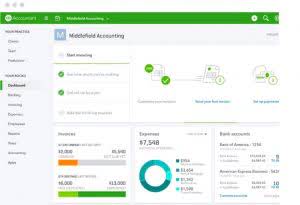
When deciding between the two, you should consider your What is bookkeeping nonprofit’s financial and reporting needs and what it’s better equipped for. Below are 3 online resources for understanding GAAP for nonprofits and how to ensure your organization is utilizing these accounting principles in reporting. Moving to an outsourced bookkeeping and accounting solution can help nonprofits focus on their mission. The move will offer expertise from tax professionals, and it will reduce expenses and increase revenue. If your organization has grown to the point where you need to hire someone to manage the books, even if they are part time, it may be worth outsourcing instead.

How to Share Your Impact With a Nonprofit…
Allocating your expenses based on these categories allows you to see exactly how much of your funding goes toward mission-related activities and how much is being used to run the organization, allowing for the full transparency that GAAP calls for. In an accrual accounting system, your nonprofit will record revenue when it’s pledged and expenses when they’re incurred. This is in contrast to a cash accounting system, which records revenue and expenses only after the money has changed hands. These principles apply to all types of organizations, but they’re especially useful for nonprofits because, like nonprofit accounting in general, one of their main purposes is to promote accountability.
- Create a realistic operating budget at the start of each year, and if it needs corrections later on, don’t worry.
- While tax-exempt status might be determined by the IRS and federal law, nonprofit status is determined by state law.
- It also outlines the reporting, filing, and notification requirements related to a nonprofit’s activities.
- The truth is, you can’t truly comply with accounting standards without first identifying which ones are applicable to your organization.
- A statement of cash flows is a financial statement that provides information about a nonprofit organization’s cash receipts and payments.
- “And that’s why good communication with your funding sources can be very helpful.”
- Nonetheless, following best practices can help not-for-profit preparers and their auditors avoid common mistakes.
Check out our FREE Nonprofit Accounting 101 course
Most nonprofits elect some kind of treasurer or financial officer to manage all of the organization’s finances. Using a personal bank account and keeping a shoebox full of receipts isn’t going to cut it. Get our FREE guide to nonprofit financial reports, featuring illustrations, annotations, and insights to help you better understand your organization’s finances. Get our FREE GUIDE to nonprofit financial reports, featuring illustrations, annotations, and insights to help you better understand your organization’s finances.

CPE Webinar: Mastering Budgeting: Build Budget Reporting for…
Generally accepted accounting principles (GAAP) are a set of accounting procedures and standards issued by the Financial Accounting Standards Board (FASB). All public companies in the U.S. must follow GAAP, and private companies generally do as well. Nonprofits must also follow GAAP standards, although their rules are sometimes slightly different from those of for-profit companies. Some of a nonprofit’s income can be taxable if not reported or managed correctly.

Because of their unique structure and operational model, nonprofits must comply with various accounting standards that are, in many ways, different from for-profit organizations. Like any organization that handles cash flow and pays taxes, nonprofits should invest in a professional accounting and finance team. Though the terminology differs, nonprofits and for-profits use the same accounting principles. According to business development strategist Maggie Tallman, many nonprofits would be better off if they followed for-profit practices of sharing data on the relationship between income (donations, in this case) and outcomes (their programs and services). However, while these terms are often used interchangeably, they encompass distinct functions within financial management. If you have a nonprofit organization, working toward making the world a better place is likely your top priority.
- We supplement the presentation of operating profit, operating margin, income before income taxes, net income and earnings per share with non-GAAP measures that exclude the impact of charges related to activities within our transformation strategy.
- A skilled bookkeeper or accountant familiar with nonprofit accounting standards can ensure accurate recordkeeping, timely reporting and adherence to regulations.
- ” This question helps you identify areas you’re spending money on, which will become your funds.
- Our qualified compliance experts can advise you on best practices and provide support to ensure your nonprofit organization follows industry-specific accounting.
- One such activity that many nonprofit professionals don’t want to deal with is nonprofit accounting.
- It also lets third parties safely assume consistency across many different nonprofits and their bookkeeping, which enables quick and accurate comparisons.
- This is fundamentally different from for-profit accounting, which is geared towards generating profits and returns for its owners (stockholders).
What is the difference between nonprofit and for-profit accounting?
- Additionally, our definition of free cash flow is limited, in that it does not represent residual cash flows available for discretionary expenditures due to the fact that the measure does not deduct the payments required for debt service and other contractual obligations.
- Whereby nonprofits must track their funds separately according to unrestricted, temporarily restricted, and permanently restricted categories.
- Although the primary goal of GAAP—ensuring consistency, comparability, and transparency—has stayed the same over the 100-plus years of its existence, accounting practices have evolved as technology has become more prevalent.
- Overhead includes those expenses that nonprofits use to cover administrative costs, market their mission for fundraising, and pay for other internal expenses that help the organization grow.
- Once you’ve started following this plan, check in with your team regularly to identify what is going well and where there is room for improvement.
You can easily see how your nonprofit uses the funding it receives from fundraising, grant seeking, and other revenue streams by analyzing this statement. Your nonprofit budget is the planning document used to predict expenses and allocate resources for your organization. It details both the costs that your organization will incur as well as the revenue you expect to receive over a set period of time, usually a year. Typical categories include program services, management and general, fundraising, and other sources of income.
Basics and Best Practices of Nonprofit Accounting:

However, donors might hesitate to give if your functional expenses become too large. The goal of GAAP is to ensure that the financial statements for for-profit entities are consistent across industries, allowing investors and the https://www.bookstime.com/ government to interpret them more easily. GAAP rules for nonprofits are intended to create transparency for donors, including grant-makers, as well as helping the government monitor whether an organization should retain its tax-exempt status. During audits, nonprofit financial statements are examined to access if they are GAAP compliant. An independent auditor will then provide a written statement attesting to whether the nonprofit’s financial statements are fairly stated and comply in all material respects with GAAP.
The Generally Accepted Accounting Principles—commonly known as GAAP—are a set of agreed-upon accounting standards that provide a framework for recording and reporting financial information. They ensure consistency and comparability in financial management among all GAAP for Nonprofits organizations in the United States, both for-profit and nonprofit. Return on invested capital (ROIC) is a non-GAAP financial measure that management believes provides useful supplemental information for management and the investor by measuring the effectiveness of our operations’ use of invested capital to generate profits.